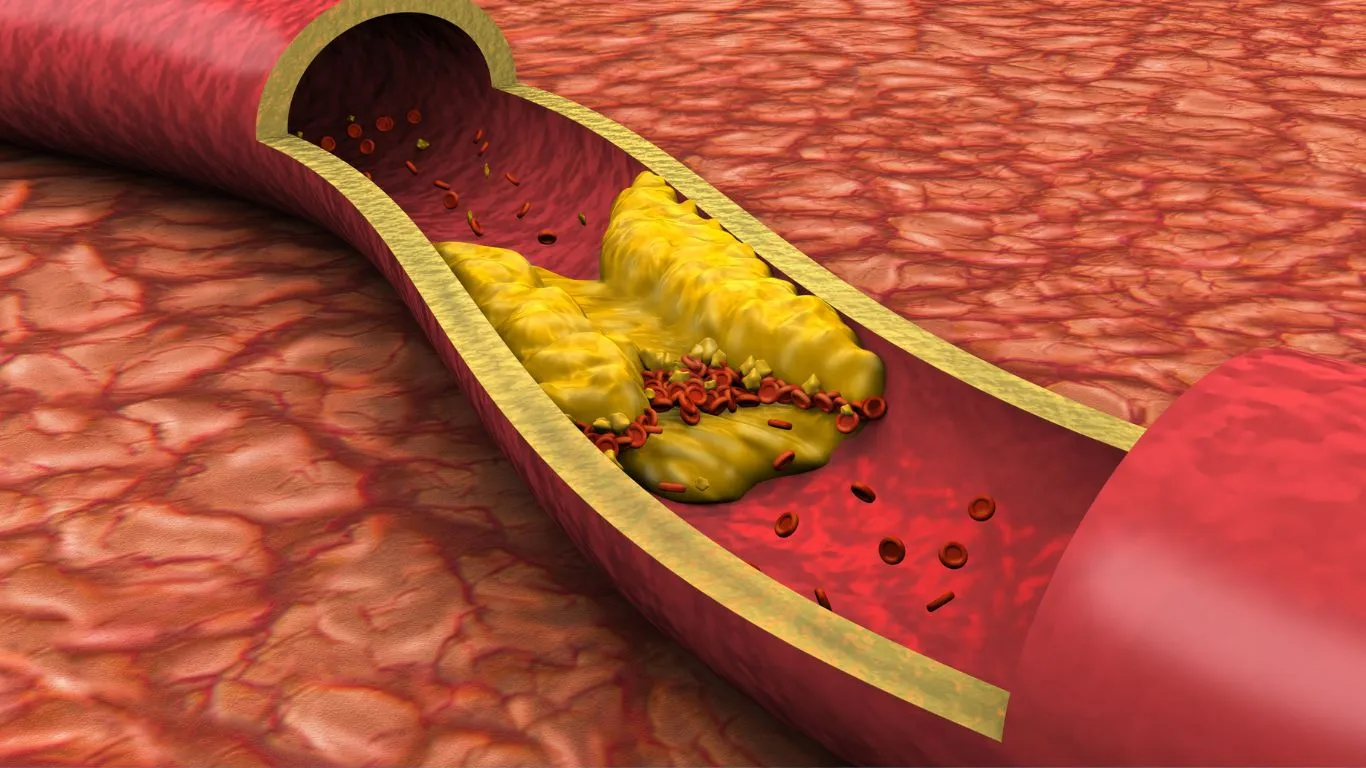
24 سبتمبر Is it possible to recover from atherosclerosis?
Atherosclerosis is characterized by the accumulation of cholesterol, fats, and other substances on and inside the walls of arteries.
This condition requires treatment, as leaving it untreated may lead to serious health complications.
After diagnosing atherosclerosis, the question “Can atherosclerosis be cured?” is often raised.
Dr. Amir Malkawi, a consultant in vascular surgery, will address this question in this article.
Can atherosclerosis be cured?
No, in reality, it is a chronic condition that cannot be cured.
However, there are many effective treatments that help manage the disease, prevent its progression, and reduce the risk of its complications.
Treatments for Atherosclerosis
The disease can be managed and its symptoms alleviated, as well as the risk of complications reduced, by following these methods:
Lifestyle Changes
In many cases, making some lifestyle adjustments and adopting healthy habits can help prevent the progression of atherosclerosis.
Positive changes that contribute to managing atherosclerosis include:
Quitting Smoking
Smoking is a major factor that accelerates the progression of atherosclerosis and heart disease, including exposure to secondhand smoke.
It is essential to quit smoking and avoid being around smokers.
Adopting a Healthy Diet
The DASH (Dietary Approaches to Stop Hypertension) diet is effective in preventing heart disease and managing this disease.
It is based on the following principles:
- Reducing saturated fat intake.
- Lowering dietary sodium consumption.
- Eating adequate amounts of fruits and vegetables daily.
- Consuming whole grains.
- Limiting added sugars.
Engaging in Physical Activity
Maintaining overall body activity or engaging in regular exercise helps prevent the development of complications.
It is recommended to perform moderate-intensity exercise for at least 5 hours per week and strenuous exercise for about 2 hours.
Consult a doctor for advice on appropriate exercises for your health condition.
Losing Excess Weight
For those with excess weight, losing between 3-5% of body weight can help reduce the risks associated with atherosclerosis by improving blood sugar, blood pressure, and cholesterol levels.
Getting Adequate Sleep
Adults should aim for at least 7 hours of sleep per night, as this positively impacts overall health.
Managing Stress and Anger
Psychological stress and anger negatively impact atherosclerosis.
Reducing stress and anxiety through relaxation exercises and meditation can be beneficial.
Read more: Diabetic foot examination
Medications
Some cases that do not respond to lifestyle changes or more severe cases of atherosclerosis may require medication to help prevent further progression of the disease.
Statins are the primary class of drugs used to treat this condition.
These medications help lower cholesterol levels in the body, which can prevent the worsening of atherosclerosis and the development of related health complications.
Examples of these medications include:
- Atorvastatin.
- Simvastatin.
- Rosuvastatin.
Healthcare providers may also prescribe other medications to individuals with atherosclerosis based on their specific health conditions, such as antihypertensives, diabetes medications, and anticoagulants.
Surgery
Doctors may consider two main types of surgical procedures for treating this condition and its complications:
Coronary Angioplasty (Percutaneous Coronary Intervention)
In advanced cases, healthcare providers perform coronary artery angioplasty to improve blood flow to the coronary arteries supplying the heart.
They use a catheter to deliver a balloon or stent to the affected artery, widening it.
Several types of coronary angioplasty include:
- Laser Angioplasty.
- Atherectomy.
- Balloon Angioplasty.
- Coronary Artery Stenting.
Coronary Artery Bypass Grafting (Open-Heart Surgery)
Coronary artery bypass surgery involves using a healthy blood vessel from another part of the body to create a new blood route around the blocked or narrowed coronary artery.
This procedure helps restore normal blood flow to the heart and is typically used in cases of severe angina.
Are There Alternative Treatments?
Some alternative treatments may help reduce the risk of atherosclerosis, but they cannot replace conventional treatments for the condition.
They may be supportive but should not be relied upon as primary therapies.
It is advisable to consult a healthcare provider before using any of these alternatives for extended periods.
Examples of alternative treatments include:
- Fish Oil.
- Oat Bran.
- Garlic.
- Calcium Supplements.
- Barley Products.
- Alpha-Linolenic Acid.
- Beta-Sitosterol.
- Green Tea.
References:
- Goldman, R. (2023, December 19). Reversing atherosclerosis. Healthline. https://www.healthline.com/health/heart-disease/reversing-atherosclerosis
- Arteriosclerosis / atherosclerosis – Diagnosis and treatment – Mayo Clinic. (2022, July 1). https://www.mayoclinic.org/diseases-conditions/arteriosclerosis-atherosclerosis/diagnosis-treatment/drc-20350575
- Treatment | NHLBI, NIH. (2022, March 24). NHLBI, NIH. https://www.nhlbi.nih.gov/health/atherosclerosis/treatment
- Christiansen, S. (2023, August 11). How are high blood pressure and atherosclerosis linked? Verywell Health. https://www.verywellhealth.com/arteriosclerosis-overview-and-more-508729
